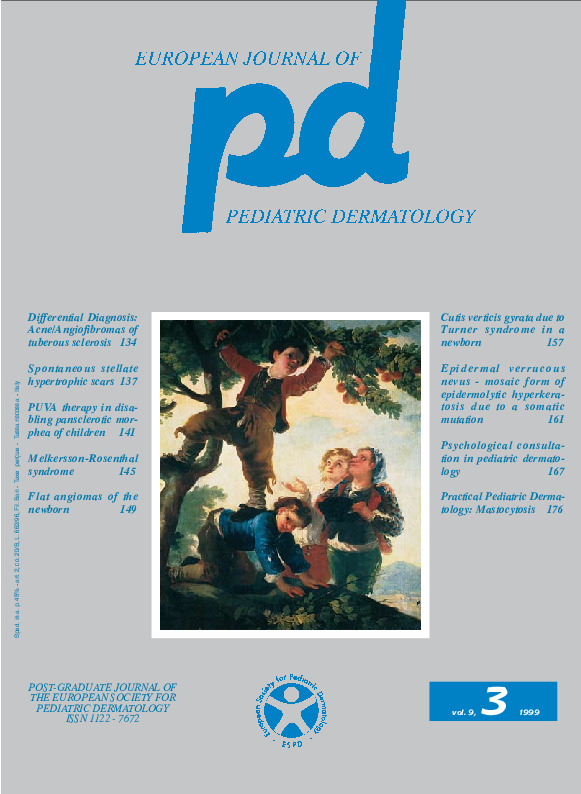Disseminated epidermal verrucous nevus - mosaic form of epidermolytic hyperkeratosis due to somatic mutation.
Downloads
How to Cite
Ruhdorfer S., Anton-Lamprecht I., Hofmann H. 1999. Disseminated epidermal verrucous nevus - mosaic form of epidermolytic hyperkeratosis due to somatic mutation. Eur. J. Pediat. Dermatol. 9 (3):161-6.
pp. 161-6
Abstract
We present a 32 months old boy first seen at the age of 14 months suffering from a systematized verrucous epidermal nevus, mosaic epidermolytic hyperkeratosis, running in stripes and vortices along the lines of Blaschko. Histology showed epidermolytic hyperkeratosis with granular degeneration of suprabasal keratinocytes corresponding to clumped keratin filaments as demonstrated by electron microscopy. A spontaneous mutation in one of the genes for keratin 1 or keratin 10 during embryogenesis is assumed to have led to the characteristic mosaic skin pattern demonstrated in this patient. If the gonades are affected, the mutation may be transmitted to the offspring to be then expressed as generalized epidermolytic hyperkeratosis (bullous congenital ichthyosiform erythroderma Brocq). This has profound implications for genetic counselling.Keywords
Epidermal hyperkeratosis, Verrucous nevus, Mosaic, Keratin 1, Keratin 10

